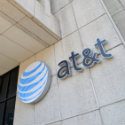AT&T to Biden: Don't leave 5G out of infrastructure spending frenzy
AT&T and others argue that federal requirements for 1Gbit/s connections would prevent 5G and other fixed wireless technologies from cashing in on a spending plan that could top $3 trillion.

The Biden administration is reportedly preparing an infrastructure spending plan that could top $3 trillion. An unspecified portion of that is expected to be directed toward crossing the digital divide.
Not surprisingly, telecommunications providers and vendors of all sizes and types are jostling for a chance to grab a portion of that spending for themselves. After all, how can the government make sure all Americans have access to a speedy Internet connection without ultimately directing money toward the companies that will build and deliver those connections?
However, there's a brewing battle over exactly how Biden should allocate all that spending – spending that could top $100 billion, based on some of the preliminary legislation that may underpin the president's ultimate proposal.
Should Biden go "full broadband" and require that every government-funded connection support 1 Gbit/s connections both on the uplink and downlink? Some former FCC officials argue this is the only way to "future proof" Biden's spending.
Others though argue that a "good enough" effort should be used in locations where Gig connections would undoubtedly cost tens of thousands of dollars to deliver.
AT&T – which is building 1 Gbit/s fiber connections to millions of new locations this year – has added its voice to the "good enough" camp.
"Fiber is the most 'future-proof' approach, but it is commonly accepted that it is not practical to assume fiber can or should serve every household in rural America," wrote AT&T's Joan Marsh, EVP of the company's federal regulatory relations, on the company's website. "Some flexibility must be preserved, particularly for the next generation of fixed wireless technologies likely to be deployed in the recently auctioned C-band that will easily deliver performance at 100Mbit/s down."
Marsh's comments are noteworthy considering her boss – CEO John Stankey – has argued that widespread deployments of 5G fixed wireless Internet services working in the C-band "starts to put a real tax on a mobile network." Similarly, AT&T networking chief Jeff McElfresh said the company will only engage in "niche" fixed wireless buildouts in locations mostly adjacent to AT&T's fiber network.
To be clear, AT&T is not averse to fixed wireless. The company already covers 1.1 million rural locations with 4G fixed wireless Internet services. However, some critics claim the company isn't putting much effort into signing up customers to that service.
AT&T has not disclosed the number of its fixed wireless customers. But the company certainly is not chasing the 5G fixed wireless opportunity in the way that Verizon and T-Mobile plan to.
Nonetheless, AT&T isn't alone in its calls for a "good enough" definition of broadband.
"Funding programs should recognize that just as consumer demands evolve, so too will the networks that drive them," wrote the Wireless Internet Service Providers Association in its latest legislative push. The trade group is essentially arguing that wireless technologies will eventually be able to support Gig connections, but not necessarily everywhere right now. "Evolving speed standards means a consumer can have robust connectivity today, and the provider can continue upgrading its networks in anticipation of future consumer demands."
Both AT&T and WISPA are also eyeing the question of "symmetrical" broadband, or the ratio between upload and download speeds. Former FCC Chairman Tom Wheeler has argued that broadband networks of the future will need to support 1 Gbit/s speeds on both the uplink and the downlink. But AT&T and WISPA don't agree with that.
"Wireless networks are not built to deliver symmetrical speeds, so any mandate around symmetrical performance could undermine delivery of these efficient and robust technology solutions in hard to serve areas of the country," AT&T's Marsh wrote, adding that symmetrical speed requirements could also end up wasting money on the construction of telecom networks across locations that are already served by fixed wireless or other, non-symmetrical technologies.
WISPA offers a similar argument: "Since the dawn of the Internet, consumers have used more download bandwidth than upload bandwidth, often by a factor of 10:1. Funding programs should recognize that just as consumer demands evolve, so too will the networks that drive them," the group wrote.
AT&T recently disclosed that it's seeing data demands among its current Internet customers becoming increasingly symmetrical, expecting the ratio of downlink to uplink usage moving from 10:1 today to about 5:1 by 2025.
President Biden is widely expected to unveil at least some portions of his infrastructure plan in the coming weeks. Exactly how he will address the digital divide remains unclear, as well as whether he will be able to pass such legislation through a divided Congress. But the decisions he makes in the allocation of that spending could have significant implications for AT&T and a wide range of other telecommunications providers.
Related posts:
— Mike Dano, Editorial Director, 5G & Mobile Strategies, Light Reading | @mikeddano
About the Author(s)
You May Also Like




.jpg?width=300&auto=webp&quality=80&disable=upscale)







